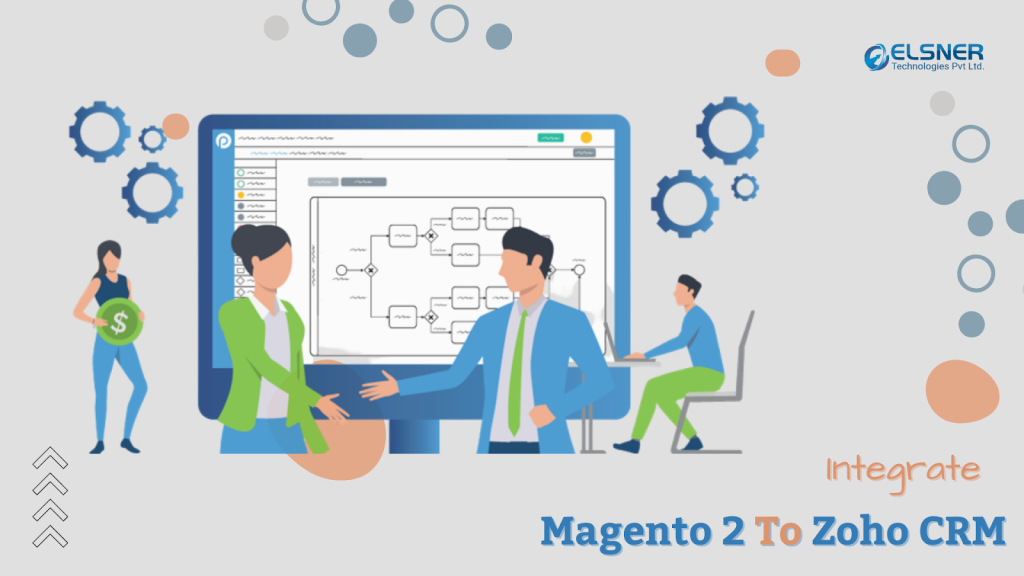Migrating from WooCommerce to Magento 2 can be done smoothly using automated tools or manual methods. Key steps include backing up your data, exporting WooCommerce products, customers, and orders, setting up Magento 2, and importing data properly. You’ll also need to reconfigure themes, plugins, and test functionality before going live.
If you want to launch a small store, WooCommerce is a good place to start. However, as your business grows, you may face slow page loads, server crashes, and downtime during peak periods. That’s when the WooCommerce to Magento 2 migration becomes a smart move. Being a scalable and highly customizable platform, Magento will effortlessly fulfill your evolving business needs and support your long-term growth.
Why Magento 2 Beats WooCommerce
Let’s define the specific areas where Magento outperforms WooCommerce:
- Enhanced Performance. The Magento e-commerce platform keeps your store fast and responsive through advanced caching, asset and image optimization, and ongoing code and extension management.
- Scalability. Thanks to Magento’s modular design, you can tweak specific parts of your store without affecting the rest. This structure simplifies handling thousands of products, categories, and users.
- Advanced Customization. As an open-source platform, Magento lets you customize and expand its functionality. To unlock its potential, hire a reliable WooCommerce to Magento migration services provider that will tailor the platform to suit your business needs.
- High-Level Data Protection. Security is another area in which Magento surpasses WooCommerce. All thanks to two-factor authentication, a strict access control system, and data encryption, not to mention built-in GDPR and PCI compliance tools and dedicated security patches.
- Large Extension Library. Visit Adobe Commerce Marketplace, and you will find a great variety of third-party modules to enhance your new Magento store. They cover practically all areas of store management, from payment gateways and shipping options to marketing and site optimization tools.
What you’ll learn in this article:
You’ll learn how to migrate your WooCommerce store to Magento 2 without losing data.
You’ll explore different migration methods including tools and manual transfer.
You’ll get tips for testing, optimizing, and launching the new Magento 2 store successfully.
Excerpt of Migrate WooCommerce to Magento 2 Easily – Expert Guide
If you’re looking for better scalability, performance, and advanced eCommerce features, moving from WooCommerce to Magento 2 could be the perfect upgrade. The process may sound technical, but with the right steps and tools, the migration can be seamless. From exporting your WooCommerce data to configuring your Magento 2 setup and testing everything thoroughly, this guide helps you avoid common pitfalls. Whether you’re using automation tools or doing it manually, preparation and precision are key.
WooCommerce to Magento 2 Migration Steps Made Simple
- Step 1: Backup Everything: Secure full backup of your WooCommerce store—files and database.
- Step 2: Export WooCommerce Data: Use built-in tools or plugins to export products, customers, and order history.
- Step 3: Set Up Magento 2: Install and configure your new Magento 2 environment on your server or hosting.
- Step 4: Import Using Tools or Manual Method: Use Cart2Cart, LitExtension, or manual CSV imports for data transfer.
- Step 5: Reconfigure & Test: Install necessary Magento 2 extensions, recreate your store design, and test all functions.
Environment Setup for WooCommerce to Magento Migration
Start by setting up your WooCommerce and Magento stores: confirm admin access, enable necessary APIs, and install migration tools. Clean out redundant data from WooCommerce, and align product categories and attributes in Magento. This solid setup is the prerequisite for a smooth, efficient, and secure migration process.
Select Data to Migrate
At this stage, organize and prepare store data for the upcoming transfer. Refine your catalog structure, ensure data is Magento-ready, and eliminate unnecessary clutter, making the data migration more efficient and error-free.
End-to-End Magento Store Migration
Your migration is ready to go. After launching the process, it will run automatically in the background. You can safely close your browser or continue working while your data migrates securely without interruptions until the process is complete.
Migrate from WooCommerce to Magento in 7 Smart Steps
As a seasoned Magento development and migration company, we understand that the process can sometimes be tricky. So we’ve created a checklist of seven key actions to achieve seamless migration.
Step 1. Prepare Your WooCommerce Store
Conduct an audit of your WooCommerce store assets to decide what data needs to be moved to Magento and what can be left behind. Once you’ve sorted the essentials, back up key items like products, customers, and orders. For safety, store backups locally and in the cloud.
Step 2. Set Up Your Magento Infrastructure
Find a reliable hosting provider that delivers both speed and scalability for high-traffic periods. Then, optimize your settings to fit your store’s performance goals. Lastly, choose a flexible, responsive theme that resonates with your brand and provides a smooth shopping experience.
Step 3. Move Your WooCommerce Data
Use LitExtension or other automated migration tools to transfer products, customers, and orders from WooCommerce to Magento. Plugins like “Export WordPress data to XML/CSV” can also help you with this task.
Step 4. Configure Magento for Data Migration
Set up your product attributes and categories in the target platform, and install any necessary extensions to migrate WooCommerce to Magento much faster.
Step 5. Transfer Essential Data
When migrating, you have two options. You can utilize tools like Firebear, Cart2Cart, or LitExtension for a quick transfer. However, you may lack some custom features. For full control, manual migration is the best option, despite being more time-consuming.
Step 6. Run Final Tests and Adjust Your Store
Test products, pricing, payments, and shipping after migration. This way, you will ensure all store features work correctly. If you’re setting up payment methods from scratch, check out this Magento 2 Payment Gateway Integration Tutorial for a step-by-step guide. Then customize settings and add unique features to make your store your own.
Step 7. Manage Updates and Post-Launch Performance
Going live is only step one. To keep your store running smoothly, stay on top of updates, performance checks, and regular audits.
FAQ
1. What are the typical costs of a WooCommerce to Magento migration?
The price of a migration project starts at $15,000 and rises based on store complexity and customization level.
2. Which WooCommerce data can be imported into Magento?
You can transfer your WooCommerce store’s products, customer details, past orders, and content.
3. Is it possible to migrate reviews and ratings from WooCommerce to Magento?
You can move your ratings and reviews to Magento.







 Want to Work in the U.S.? Discover the Fastest Route with the EB-3 Visa Program
Want to Work in the U.S.? Discover the Fastest Route with the EB-3 Visa Program